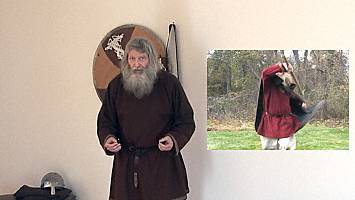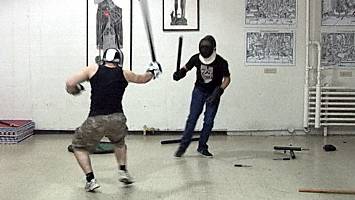
|

|
Hurstwic® Viking Combat Training
Volume 1: Fundamentals of Viking Training
Now Available on DVD
|
This training video was created over a decade ago, and during that time, our research has continued. The material contained in this video no longer reflects our current thinking on Viking combat or on Viking combat training. We continue to make this videos available to students of Viking combat who may have an interest. The most recent descriptions of our training approach is now contained in our new book, Men of Terror, which can be purchased from your favorite book seller. |
 |
An introduction to the fighting moves of the Vikings Whether you are a beginner, or an experienced fighter, this DVD can help you grow to become a stronger Viking fighter. This DVD introduces you to Viking history, culture, and weapons, and shows why weapons were such an important part of their society. Then you move to the practice room to learn the fundamentals of Viking combat, such as stance and movement. You will learn how to cut with power and how to defend yourself with a Viking shield. You will see the drills, exercises, and training gear we use to practice these skills. You will finish with sparring, a true test of how well these fighting moves work. Join us in our practice of Viking-age fighting moves. Use the material on this DVD to grow as a Viking fighter.
• Buy the DVD now from Hurstwic Retailers, clubs, and schools: please contact Hurstwic directly for wholesale and quantity pricing. The DVD is also available from Amazon and from other vendors. International Customers: The DVD is also available in
the PAL format. Continue Shopping for Hurstwic merchandise. |
A preview of the DVD on YouTube
Topics covered include:
| Chapter 1: Introduction |
 |
| Chapter 2: Weapons of the Viking Age |
 |
| Chapter 3: The Sagas of Icelanders and other sources |
 |
| Chapter 4: Stance and Movement |
 |
| Chapter 5: Cutting and Angles |
 |
| Chapter 6: Padwork |
 |
| Chapter 7: Shields |
 |
| Chapter 8: Combining Sword and Shield |
 |
| Chapter 9: Grappling |
 |
| Chapter 10: Sparring |
 |
| Chapter 11: Concluding Remarks |
 |